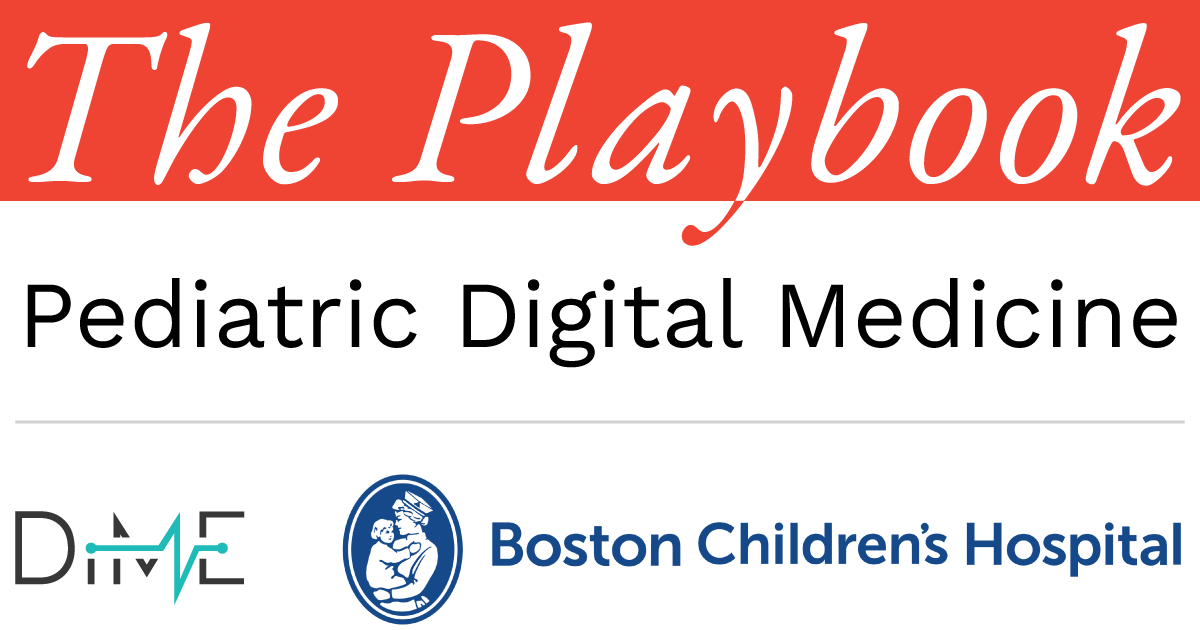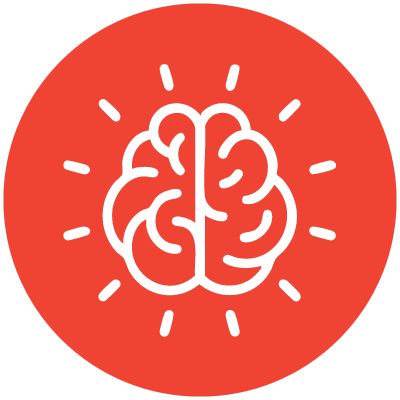
Chapter 3 – Section 2
Settings of pediatric DHT implementation

To maximize the impact of pediatric DHTs, consider the unique dynamics of each environment where they are used—clinics, homes, schools, and community settings.
Use this section to explore how each setting influences the adoption, usage, and overall effectiveness of DHTs, offering insights you can use to align your technology with real-world care contexts for children and their families.
Pediatric care spans a variety of environments, each with distinct considerations for implementing DHTs. Consider how the setting influences both the technology design and the approach to implementation. Key settings include:
-
 Home: Using DHTs for self-management of chronic conditions and remote monitoring can take place at home.
Home: Using DHTs for self-management of chronic conditions and remote monitoring can take place at home. -
 School: School nurses and educators use DHTs to monitor health, especially for children with chronic conditions.
School: School nurses and educators use DHTs to monitor health, especially for children with chronic conditions. -
 Primary and specialty clinics: Clinicians use DHTs to support regular visits, track progress, and manage ongoing care.
Primary and specialty clinics: Clinicians use DHTs to support regular visits, track progress, and manage ongoing care. -
 Community health centers: Community health centers can use DHTs to serve underrepresented populations, including those in rural or low-income areas.
Community health centers: Community health centers can use DHTs to serve underrepresented populations, including those in rural or low-income areas. -
 Clinical trials: Researchers can both evaluate the effectiveness of DHTs or apply DHTs in the actual trials (e.g., patient engagement, measurement and data collection). Read more about applying DHTs in clinical research here.
Clinical trials: Researchers can both evaluate the effectiveness of DHTs or apply DHTs in the actual trials (e.g., patient engagement, measurement and data collection). Read more about applying DHTs in clinical research here.
Homes and schools as important settings of care
DHTs are transforming home care for pediatric patients, enhancing management of chronic and acute conditions directly from the home. Discover how these tools provide a seamless bridge between home and other care sites.
Parental involvementt:
Reduced hospital visits:
Improved adherence:
Schools play a crucial role in managing pediatric health, particularly for students with chronic conditions. DHTs empower school nurses with tools like real-time monitoring and telehealth consultations to ensure students receive timely and effective care.
Enhanced support for school nurses:
Improved coordination:

Meet Amir
Amir’s asthma requires diligent management across his two main care environments: home and school. At home, his parents, Tasha and Bryce, use a smart inhaler paired with a digital platform that tracks his medication use and provides reminders, improving adherence and reducing the risk of emergencies. At school, his nurse, Ryan, uses a real-time monitoring tool that alerts him to any concerning changes in Amir’s condition, enabling prompt intervention and ensuring his safety. With these connected tools, Amir’s care is seamlessly coordinated, empowering his parents and school nurse to work as a unified team in managing his health.
Personas illustrate key points in action, showcasing real-world applications and practical scenarios based on fictional personas.
DHTs in clinical and community settings
DHTs are key to enhancing the quality and reach of pediatric care in primary and specialty clinics. From conditions like diabetes to ADHD, discover how DHTs support frequent monitoring and foster continuity of care across clinic visits and specialists.
Continuous monitoring:
Seamless follow-ups:
Comprehensive care integration:
Community health centers also play a pivotal role in delivering essential healthcare to underserved children. Discover how DHTs enhance access by offering tools like telemedicine and mobile health apps, bringing quality care to low-resource settings.
Increased accessibility:
Community empowerment:
Implementing DHTs in pediatric research
Clinical trials are an essential phase in the life cycle of DHT development. As a setting for implementation, DHTs can enhance both trial quality and participant experience by supporting data collection, adherence monitoring, and patient engagement. Learn more about how DHTs can advance pediatric research and bring children to the forefront of medical advancements in our microplaybook, Digital Health Technologies in Clinical Investigations.
Special considerations for pediatric implementation settings
Stakeholder considerations

- Design for developmental stages: Adapt interfaces to align with children’s cognitive and health literacy levels. For young kids, prioritize caregiver dashboards; for teens, focus on tools that foster independence.
- Establish feedback loops: Regularly evaluate age-specific needs and adjust features to stay relevant.
- Provide caregiver education: Offer ongoing support programs for caregivers as children’s healthcare needs shift.
- Consult pediatric experts: Work closely with pediatric specialists to ensure developmentally appropriate tools.
- Account for language and developmental differences: Tailor language to the population’s needs, considering both age-specific comprehension (we suggest a 5th grade reading level) and the local language context and needs of the care system.
Care transitions and continuity

- Formalize transition protocols: Create shared digital care plans accessible across all relevant settings (hospital, school, home) and to all relevant stakeholders (patients, caregivers, clinicians) to ease transitions.
- Consider multiple home settings: Account for complex family dynamics (e.g., blended families) by designing data-sharing and device transfer protocols for seamless care management. Consider how physical devices or passwords and login information can be transferred between relevant stakeholders.
Health Literacy:
The degree to which individuals have the capacity to obtain, process and understand basic health information needed to make appropriate health decisions. It also includes numeracy skills — such as calculating cholesterol and measuring medication doses —and knowledge of health topics.

Meet Parker
Personas illustrate key points in action, showcasing real-world applications and practical scenarios based on fictional personas.

Meet Maya
Maya’s parents, Isabel and Marco, are fully responsible for her epilepsy care. The digital platform they use is designed with their needs in mind, offering a caregiver dashboard that simplifies medication tracking and seizure monitoring. The system includes educational materials in Spanish and at an accessible reading level, ensuring that Isabel and Marco can easily understand and engage with the content. Ongoing caregiver education resources, such as videos and support programs, equip them with the tools they need to manage Maya’s condition confidently as she grows and her care needs evolve.
Personas illustrate key points in action, showcasing real-world applications and practical scenarios based on fictional personas.









